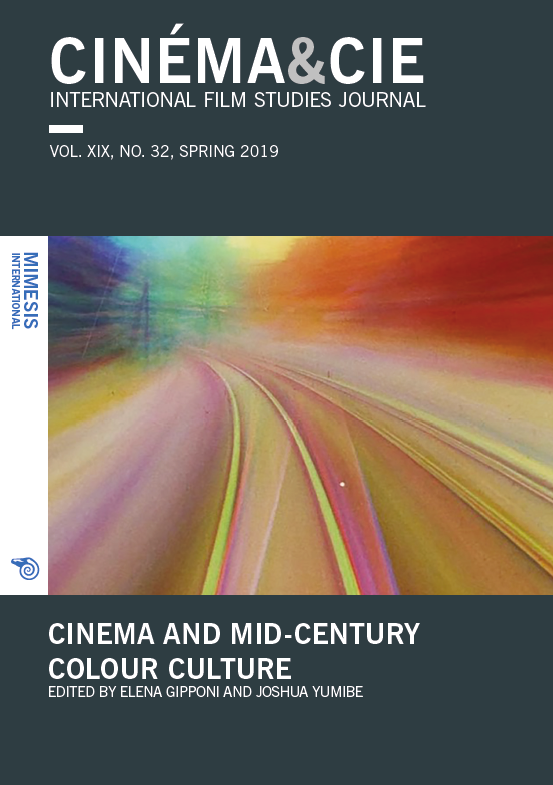The History of a Broken Blue Fusuma: Colour in Suzuki Seijun’s Nikkatsu Films
Abstract
This article traces the historical development of aesthetic practices of colour in the generic and industrial context of Nikkatsu Action Cinema of postwar Japan, and how they influenced the idiosyncratic style of Suzuki Seijun. Nikkatsu Action’s needs as a genre devoted to a youthful and energetic subject matter shaped its colour design, and its filmmakers developed a bright, vibrant colour aesthetic by drawing on neon lighting and coloured light filters. It was within this context that Suzuki’s colour style took shape. His earliest experiments take the Nikkatsu colour idiom and bend its diegetic pretexts to motivate sudden colour transformations. In his later Nikkatsu films, Suzuki elaborates on these experiments by transforming them into a critical component of his formal strategies. In Gate of Flesh (Nikutai no mon, 1964), he gives each of the four main female characters a colour-coded costume, and in each woman’s internal monologue her dress colour becomes the colour of the entire background, suffusing the image with her subjectivity. Suzuki uses sudden colour transformations to punctuate violent action in his later action films, which this article considers in a reading of Tattooed Life (Irezumi ichidai, 1965)’s climax. Suzuki’s experimentation gradually refines his colour design to an abstraction that belies its origins in popular genre cinema.
Downloads
Published
How to Cite
Issue
Section
License
Copyright (c) 2021 Cinéma&Cie. Film and Media Studies Journal

This work is licensed under a Creative Commons Attribution 4.0 International License.





